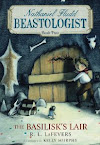So as I picked up the project again, I thought I’d try a few techniques, and I’m going to talk about them here because I think they apply to most big revisions.
The problems I’ve had with the story are:
A cast of thousands
Historical and political events risk swamping the story and confusing the reader
Working out the logistics of what historical events/characters to include and what to make up (in other words, how fast and loose can I play with history. Quite a lot, I’m thinking, since it takes place in the fifteenth century and there are not a whole lot of records about these people.)
Nailing down geographical places
So I gathered all my materials together but decided not to look at any of them yet. I decided to sort of approach the story without all those details and subplots and backstories in my head, thinking that if I approached it with fresh eyes unencumbered by all that I knew, it would make it easer to clearly see what the story was about and who was absolutely essential to the telling of it.
This sprang in part from what they talked about in the book MADE TO STICK, about how people are encumbered by what they know, so they lose sight of what people who aren’t so immersed in the same subject actually need to know without being overwhelmed.
My initial tasks:
- Printed out the last draft of the mss in a new color. (Pink, in case anyone is interested.)
- Re-read two of the research books to get fresh in my mind what was actually historical and to see which of those historical details/personages/events leaped out at me as being integral to the story.
- Took the time to nail down a couple of research bits I’d been stumbling over—the name of the heroine’s village, for example, and whether or not the hero was a first or second son, (which made a huge difference back in the fifteenth century, let me tell you!)
Next, I typed up a brief, three page synopsis of the major story events from the heroine’s standpoint, then again from the hero’s standpoint. That way I can see their motivation for all the acts, and see where and how it interacts.
Now I really need to decide who the true antagonist is. The thing is, there are so darn many to choose from, so many of the nobles of this time and in this court were horribly duplicitous and taking bribes from other kings. But I really need to decide who my heroine’s antagonist is, which I suspect will be different from the story event/historical antagonist.
In fact, that is what I plan on working on today. Perhaps I will officially declare this “Discover One’s True Antagonist Day.”

















4 comments:
Robin, great post--I'm struggling with this on my historical YA. I want so much to tell my MC's story, NOT just a history story...
I like the synopsis just from your MC's pov. Great idea!
So glad you found it helpful, Becky! And stick around, because I'll be wrestling with it for a long while, I'm sure. :-)
Made to Stick by Chip and Dan Heath is a great book. I'm glad I'm not the only one who sees its usefulness in the writing arena.
Walking Tiger, I absolutely thought MADE TO STICK was a natural for writers!
Post a Comment